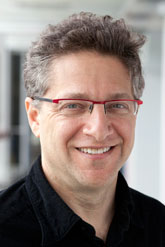Peter Galison is one of the most highly respected contemporary historians of science and a public intellectual with a national and international reputation. Although he holds doctorates in physics and the history of science (Harvard 1983), Professor Galison's multifaceted work has also had profound intellectual influence outside his own field of scholarship. He is at present the Joseph Pellegrino University Professor at Harvard University.
Professor Galison's early training in particle physics has shaped his scholarship on the historical aspects of twentieth century physics. His work focuses on the complex relationship between the three principal subcultures of modern physics--experimentation, instrumentation, and theory. Galison's monographs on experiment, How Experiments End(Chicago1987), and on instruments, Image and Logic: A Material Culture of Microphysics(Chicago 1997), are expected to be followed by a final volume on theory. His book, Einstein's Clocks, Poincare's Maps (Norton 2003), begins the study of theory by focusing on the ways in which relativity theory stood at the intersection of technology, philosophy, and physics. He is currently working on a study about the ways that technology reforms the self.
In his broad-ranging book Objectivity (Zone Press 2007), co-authored with Lorraine Daston, Professor Galison explores another one of his intellectual interests--the world of visual representation from atlases to photography. Relying on his longstanding interest in visual imagery, as already evident in Image and Logic and the co-edited volume Picturing Science, Producing Art (Routledge 1998), Objectivity traces the development of objective modes of thinking from the nineteenth century to the present.
Further work on the boundary between science and other fields includes his co-edited volumes on the relations between science, art and architecture, The Architecture of Science (MIT 1999), as well as Big Science (Stanford 1992), The Disunity of Science (Stanford 1996), Atmospheric Flight in the 20th Century (Kluwer 2000), Scientific Authorship (Routledge 2003), and Einstein for the 21st Century: His Legacy in Science, Art, and Modern Culture (Princeton 2008).
Recently, Professor Galison has created several important documentaries for public television and cinema. The first of these films, The Ultimate Weapon: The H-Bomb Dilemma, premiered on the History Channel in 2000. The second film, Secrecy, had its first screening at the Sundance Festival in 2008. Secrecy, which addresses the topic of government classification of information under the rubric of military secrecy, has won several major awards. His current film, Nuclear Underground, is about the burial of nuclear waste -- and the questions that it raises about our relation to the land, energy, and the future.
Among his many academic honors, Peter Galison has received the Max Planck Research Award (1999), the Pfizer Award from the History of Science Society for Image and Logic (1998), a MacArthur Fellowship (1997-2002), a fellowship in both the American Association for the Advancement of Science (1995- ) and the American Academy of Arts and Sciences (1992).


